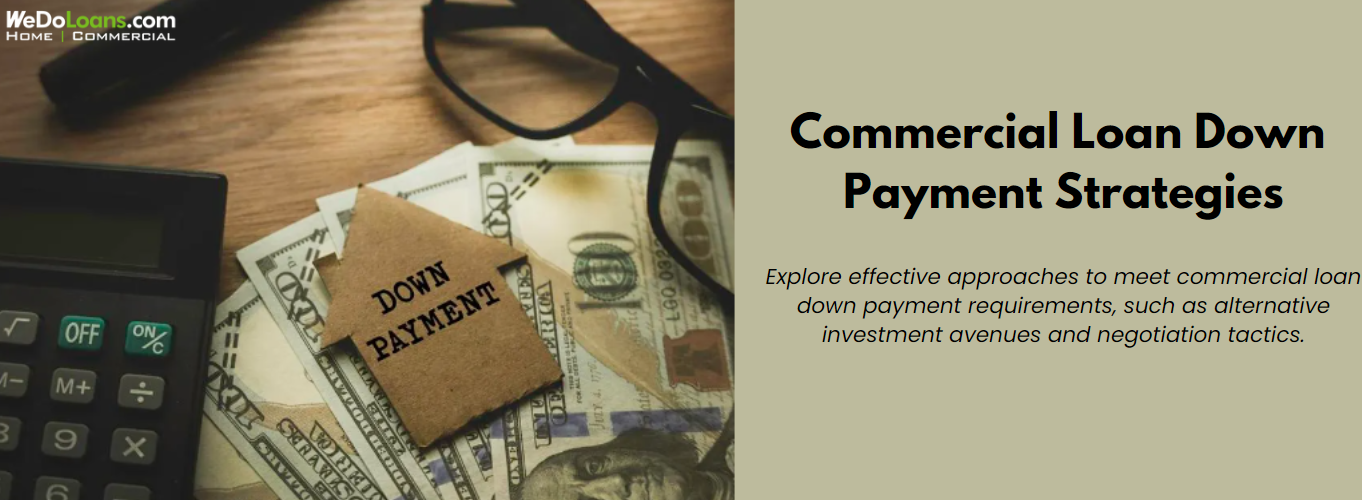
One of the critical factors in any commercial loan application is the down payment. Most investors aim to secure financing with the minimum down payment to leverage their potential returns and manage monthly cash flows effectively. If you’re in the process of making an offer or seeking financing, here’s what you generally need to know about the minimum commercial loan down payment.
How to Qualify for a Commercial Loan?
Commercial loan approvals hinge on several factors. Lenders assess credit scores, business history, cash flow, and collateral when evaluating loan applications. While requirements vary by lender and loan program, it’s advisable to meet the following criteria:
- Credit Score: Aim for a credit score of around 660 or higher (680 for some lenders). While lower scores may still secure loans, favorable terms typically require scores above 680.
- Business History: Lenders prefer businesses with at least two years of profitable operation, though new businesses with strong credit and personal guarantees can also qualify.
- Cash Flow: Ensure your business generates sufficient cash flow to cover loan payments and expenses; this criterion is less flexible than others.
- Collateral: The property being financed serves as collateral, influencing the loan program eligibility, especially under specialized programs.
The commercial loan process differs from residential mortgages, with distinct criteria and expert guidance available from lenders or CommLoan consultants upon inquiry.
Which Type of Commercial Loan is Right for You?
Commercial real estate loans come in various types, each tailored to different needs and qualifications:
- Traditional Commercial Mortgage Loans: Offered by banks with lower interest rates but stringent qualifications, suitable for established businesses with strong credit histories.
- SBA 7(a) Loans: Backed by the SBA, these loans cater to small businesses needing financing for working capital, equipment purchases, or real estate, offering more accessible terms.
- SBA 504 Loans: Also SBA-backed, these finance long-term equipment or commercial real estate purchases, ideal for expanding facilities.
- Line of Credit: Utilizes property equity for flexible borrowing, beneficial for businesses with substantial equity seeking short-term funding solutions.
- Portfolio Loans: Finance multiple properties under one loan, particularly useful for businesses using several locations.
- Commercial Hard Money Loans: Short-term loans with higher rates, suitable for urgent or unique financing needs where traditional options are limited.
Requirements for a Commercial Loan
Securing a commercial loan entails meeting specific criteria, including:
- Down Payment: Initial payment made by the borrower at the property purchase. Most commercial loans require down payments ranging from 20% to 25%, varying by loan type.
- Loan-to-Value (LTV) Ratio: Compares the loan amount to the property’s appraised value, typically ranging from 65% to 80%.
- Debt Service Coverage Ratio (DSCR): Measures the business’s cash flow ability to cover loan payments, often requiring a ratio of 1.2 or higher.
How Much Down Payment is Needed for a Commercial Loan?
The down payment for a commercial loan depends on the loan type and lender requirements. Most loans necessitate down payments between 20% and 25% of the property’s purchase price, though some programs may require as low as 10% or as high as 30%.
Key down payment requirements for various commercial loans include:
- Bank Loans: Typically 20% to 30%.
- SBA 7(a) Loans: 10% to 20%.
- SBA 504 Loans: 10% to 15%.
- Hard Money Loans: 20% to 30%.
- Line of Credit: Minimum equity of 20% to 30%.
SBA loans generally offer some of the lowest down payment requirements across loan programs.
Factors Influencing Down Payment Requirements
Several factors impact the down payment for a commercial loan:
- Credit Score: Higher scores may qualify for lower down payments.
- Property Type: Different types require varying down payment amounts.
- Loan Size: Larger loans may necessitate higher down payments.
- Industry Risk: Riskier industries might face higher down payment requirements.
Strategies to Lower Your Down Payment
To manage down payment concerns, consider these strategies:
- Improve Credit Score: Pay down debts, ensure timely payments, and review credit reports for accuracy.
- Offer Additional Collateral: Supplement the down payment with additional collateral.
- Seek Guarantees: Secure a loan guarantee from investors or the SBA.
- Partner with Investors: Collaborate with investors for additional capital.
- Explore Loan Options: Compare lenders and programs to find lower down payment requirements.
Choosing a Commercial Real Estate Lender
Select a lender offering favorable down payment terms and other beneficial conditions. Evaluate options based on your financial standing and property requirements, seeking recommendations and expert guidance when necessary.
Conclusion
While down payment requirements vary by loan type and lender, prepare for 20% to 25% in most cases. Shop around to find a commercial loan that best suits your financial goals and property needs.
